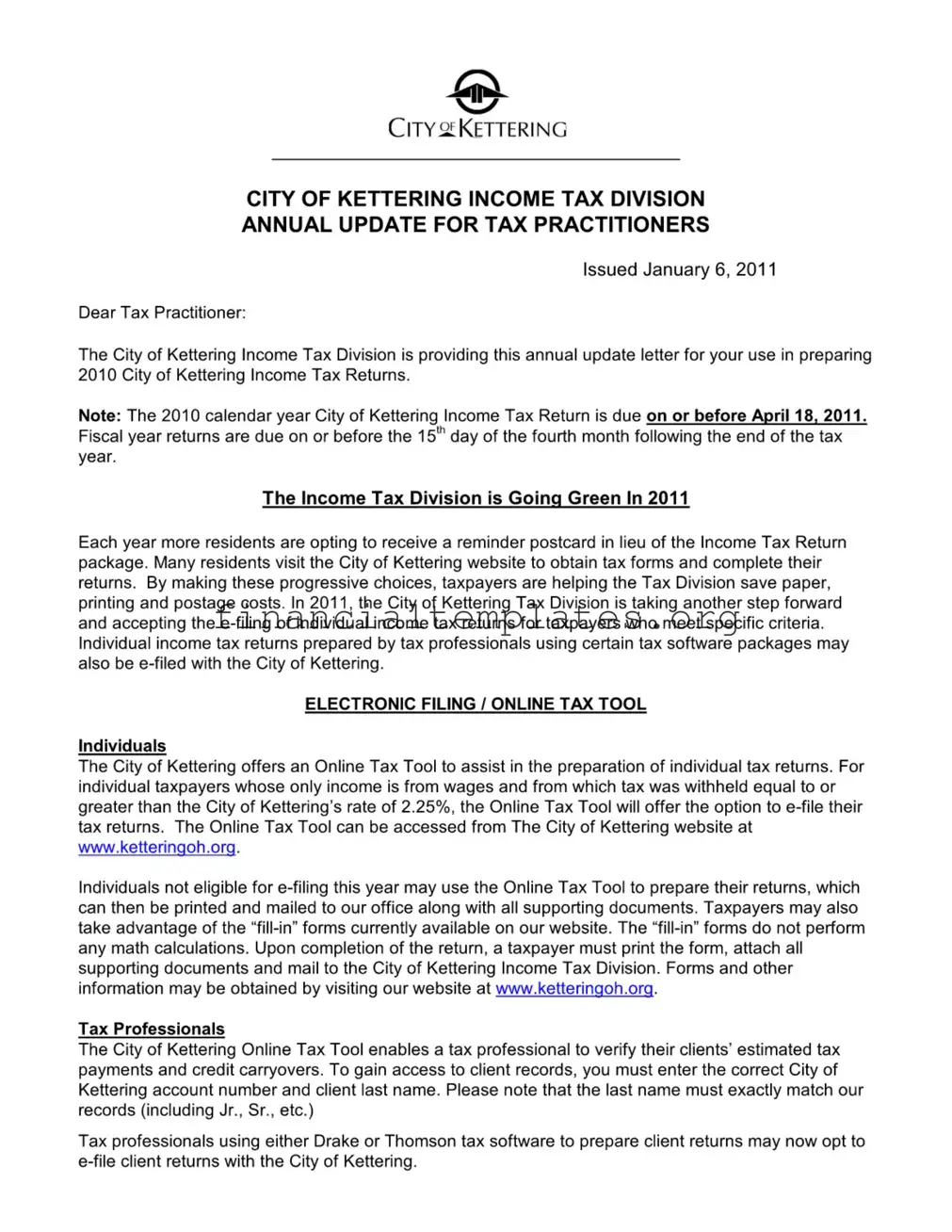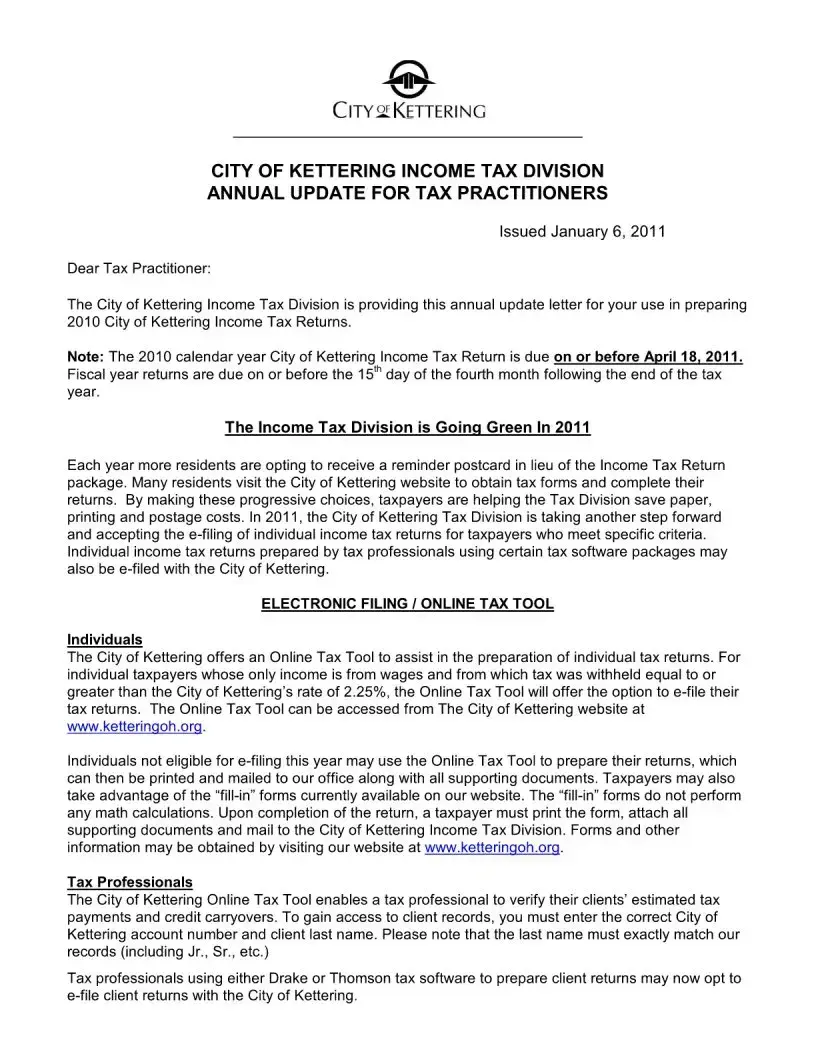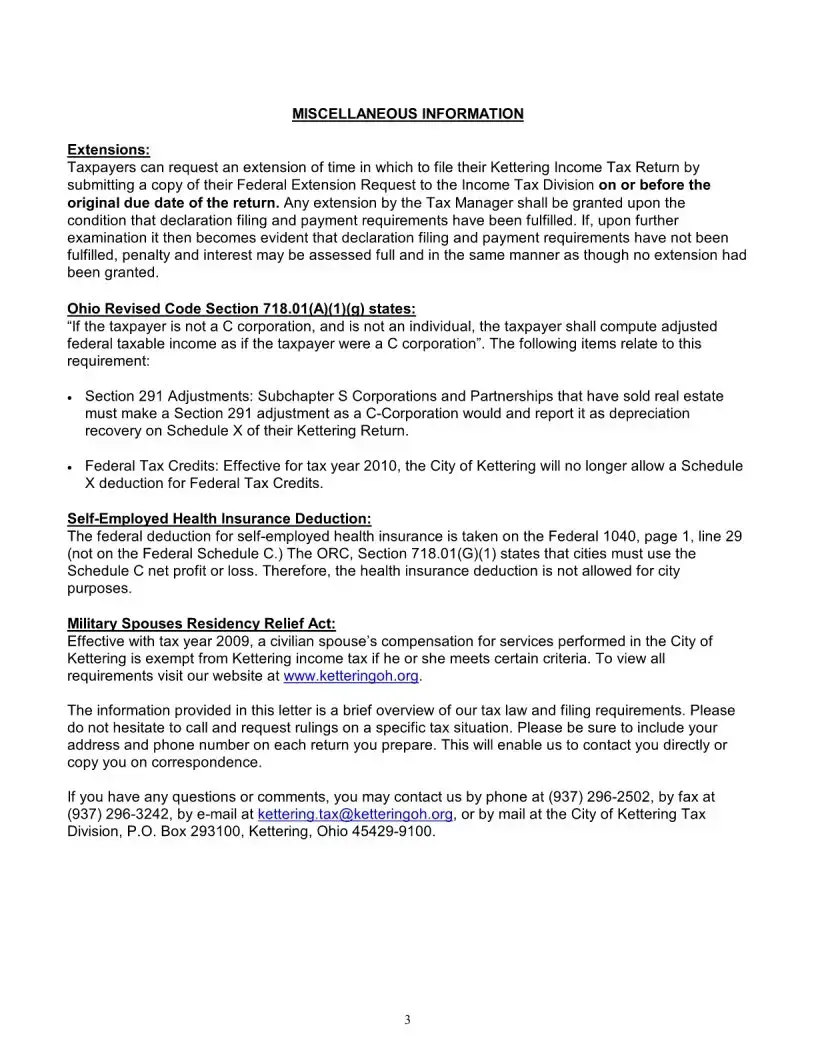The Kettering City Taxes form is similar to the IRS Form 1040, which is the U.S. individual income tax return. Both forms are used to report income and calculate taxes owed or refunds due to taxpayers. The Kettering form specifically addresses city-level income taxes, while the IRS Form 1040 covers federal taxes. Each form requires similar types of income information, such as wages, salaries, and possibly dividends, and allows for electronic filing, demonstrating an increasing trend towards digital tax administration.
Similarly, the document echoes the characteristics of the IRS Form 944, Employer's Annual Federal Tax Return. This form is designed for small employers to report and pay federal income taxes withheld from employees' wages. The Kettering City Taxes form's section on withholding and annual reconciliation for employers draws a parallel in how local and federal tax systems require employers to report taxes withheld and remitted on behalf of their employees, albeit the Kettering form focuses on city tax obligations.
The document also aligns with IRS Form 1120, the U.S. Corporation Income Tax Return. Both serve entities (in Kettering's case, entities operating within the city limits) by guiding them through reporting income, gains, losses, deductions, and credits to determine their tax liabilities. Kettering's specific adjustments, such as the Section 291 adjustments for Subchapter S Corporations and Partnerships, mirror the federal form’s adjustments to reconcile taxable income for specialized entities.
Comparably, the Kettering form resembles the IRS Schedule SE, used to calculate self-employment tax at the federal level. Kettering's guidance on self-employed health insurance deductions for city tax purposes reflects a comprehension of the unique tax situations self-employed individuals face, requiring separate calculations similar to those made for federal self-employment tax and deductions.
The online tax tool mentioned within the Kettering document is similar to the IRS Free File system. Both offer electronic means for individuals to prepare and file their taxes, aiming to make the process more efficient and accessible. Each platform accommodates taxpayers who meet specific criteria, facilitating a move towards a more digital and user-friendly tax filing experience.
The adaptation of electronic filing and payment options in the Kettering document shares similarities with the Electronic Federal Tax Payment System (EFTPS) used by the IRS. Both systems provide methods for taxpayers and employers to remit taxes digitally, enhancing the security and timeliness of tax payments. These electronic options signify a shift towards more streamlined, environmentally friendly tax processes at both city and federal levels.
Another comparable document is the IRS Form W-2, Wage and Tax Statement, particularly in Kettering's requirements for electronic submission of W-2 information by employers. Just as the federal system requires employers to report wages and taxes withheld for employees via Form W-2, Kettering mandates similar reporting for city income tax purposes, reflecting the dual levels at which income taxes are administered and enforced.
The document's reference to fill-in forms accessible on the Kettering website mirrors the IRS’s practice of providing downloadable, interactive tax forms. This similarity underscores the importance of accessible tax resources for self-preparation, allowing taxpayers the convenience of completing forms digitally before printing and mailing them, thereby reducing potential errors.
Finally, the Kettering City Taxes form's provision for extensions parallels the IRS Extension Form 4868, which is the Application for Automatic Extension of Time To File U.S. Individual Income Tax Return. Both the city of Kettering and the federal tax system acknowledge circumstances that may prevent taxpayers from meeting the original filing deadline, offering a process for requesting additional time while emphasizing the need to estimate and pay any taxes owed by the original due date to avoid penalties.



